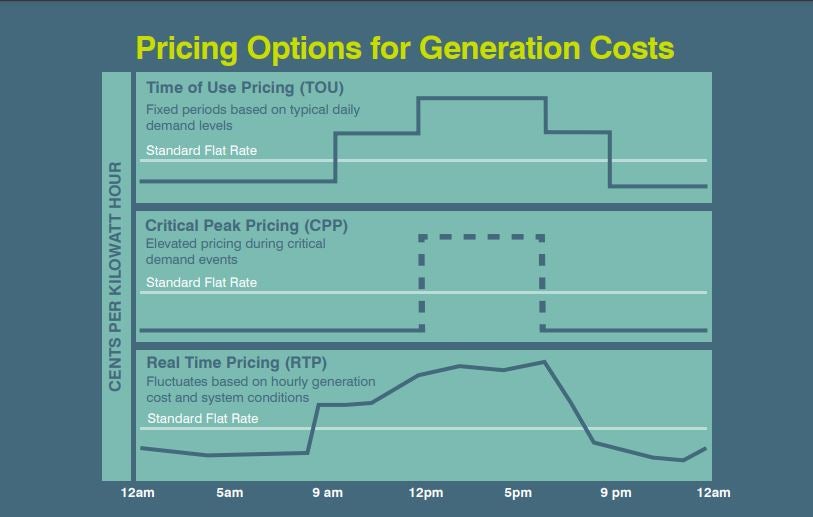 By Elizabeth B. Stein and Beia Spiller
By Elizabeth B. Stein and Beia Spiller
Zero-emission solutions for trucks and buses have arrived. But converting fleets from fossil fuels to electricity requires more than new vehicles and chargers. It will require smart electricity pricing to ensure that new demand from these power-hungry vehicles doesn’t break the grid, and that costs remain manageable for fleet owners, utilities and all customers.
Making good use of the grid at times when it would otherwise be underutilized keeps electric rates low for all customers. For passenger vehicles that are charged at homes, pricing structures that encourage charging when demand is low and clean electricity is plentiful have produced great results for car owners, the electric system and the planet.
Getting similar win-win-win outcomes for trucks and buses will be more complex, though achievable with the right policies and rate structures.
Compared to passenger vehicles, trucks and buses are a tremendously diverse segment that varies by vehicle type, duty cycle, fleet size, business model and experience with complex electric pricing. To electrify all or most of these vehicles rapidly will require a variety of price structures that match these diverse characteristics.
Incorporating two key principles — cost containment and bill manageability — into electric vehicle rate design will allow electricity pricing to be more efficient and effective for the truck and bus sector and, in turn, result in a more rapid and successful transformation.
A 100% clean transportation future requires smart electricity pricing for trucks and buses Share on XCost containment
Today, the rates charged to commercial customers are not necessarily cost-reflective, especially for entirely new customer types like electric fleet customers. This represents a significant missed opportunity, because when prices accurately reflect the system and environmental costs caused by customers’ energy use, customers’ actions to keep their own bills down also reduce system costs and climate and air pollution. Strategies to ensure that pricing is cost-reflective include making sure customers are incentivized to charge at low-cost times or keep their demand from spiking at times when the grid is already strained. Price signals can also help contain system costs by rewarding customers for providing valuable services to the grid (for example, feeding energy from the vehicle battery onto the grid) at the times and locations where those services are needed.
Bill manageability
Ensuring that fleet owners are able to manage their fueling bills effectively is essential to accelerating the electric transformation of trucks and buses. And while fleet owners must pay their fair share of maintaining the electric grid, these costs must not result in unacceptably high or unpredictable bills, or they may become an extra barrier to electrification. Pairing cost-containment measures with managed charging software, as well as targeted marketing, education and outreach can help ensure fleet owners understand the price signals they will face when they charge. This is especially true where customers are adapting to new pricing structures that are unfamiliar to them. There are a variety of approaches to consider, but the important thing to remember is that what works for some fleet owners may not work for others. For the transformation to happen at scale, we need rate options that work for everyone.
To further unpack the layers of cost containment and bill manageability, we have developed a short policy brief: Principles for Smart Electric Pricing for Charging Electric Trucks and Buses.
In our policy brief, we discuss how achieving the level and speed of transportation electrification we need to reduce climate and local air pollution will require more than swapping motors. It will require utilities to design and market pricing options under the principles of cost containment and bill manageability in order to accelerate an efficient zero-emission future.
Larissa Koehler contributed to this post.










